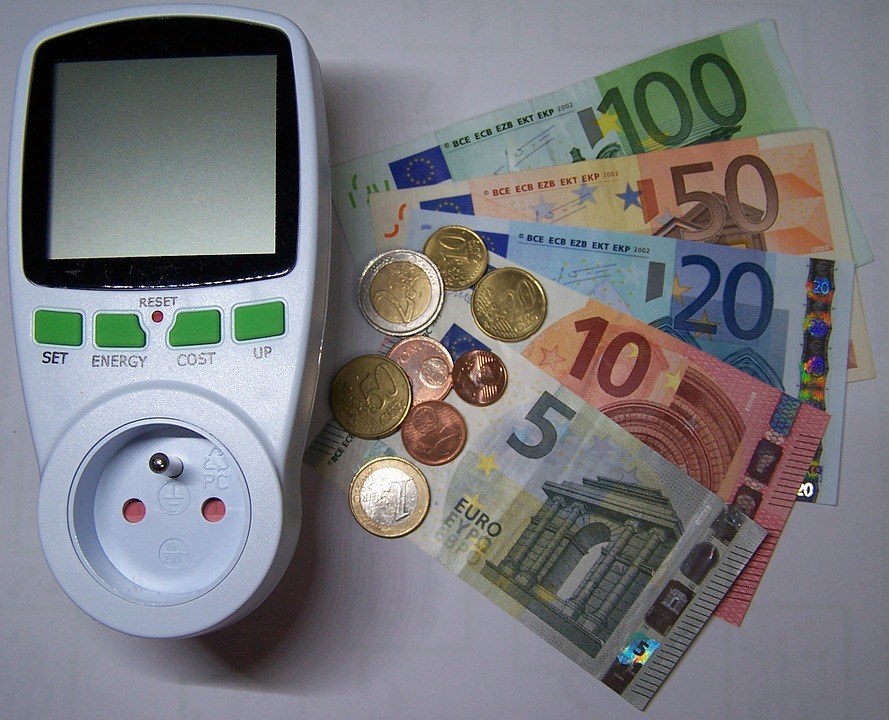Have you thought about how much your neighbor pays for their house’s electricity?
Have you ever wondered what the average electric bill for wherever you live compared to other cities or states? Don’t worry, as we’ve got it all figured out for you in this article.

The average monthly electric bill is usually affected by the following two factors:
1. Electricity Usage Amount
Compared to others in your neighborhood or community, a homeowner’s energy consumption could be relatively lower or higher, even if they live in a similar household or an apartment.
Generally, a regular household’s monthly electric usage is strongly associated with the climate where it resides and its size.
2. Average Electricity Price
The rate of electricity varies by region, state, ZIP code, or even from one homeowner to the next. If you believe what you’re paying for on average may be higher than that of other states, then there’s no harm in looking it up online.
How do You Calculate the Average Electric Bill?
Apart from the taxes or other expenses that you need to consider based on where you live, the formula for calculating the average electricity bill of your state or municipality is usually the following:
Average Kilowatt-hours Used * Average Cents Per Kilowatt-hour/100 = Average Electricity Bill
Kilowatt-hour is the unit of electric measurement in an hour when using appliances for lighting, cooling, or heating, and using the dryer, washer, as well as other items that run on electricity.
When viewing your electric bill, you might notice that kilowatt-hour is normally displayed in its SI unit form of kWh, and that electric rate is normally written as ¢ per kWh or cents per kWh.
Here’s the average electric bill by state:
| State | August 2020 rate (cents/kWh) | Avg. monthly usage (kWh) | Avg. bill | Cost ranking |
| Alabama | 12.76 | 1,136 | 144.95 | 48 |
| Alaska | 23.75 | 601 | 142.74 | 47 |
| Arizona | 12.37 | 1,033 | 127.78 | 42 |
| Arkansas | 10.51 | 1,028 | 108.04 | 20 |
| California | 20.77 | 554 | 115.07 | 29 |
| Colorado | 12.84 | 678 | 87.06 | 4 |
| Connecticut | 22.13 | 690 | 152.70 | 50 |
| Delaware | 12.15 | 912 | 110.81 | 23 |
| Florida | 11.61 | 1,089 | 126.43 | 39 |
| Georgia | 12.89 | 1,062 | 136.89 | 46 |
| Hawaii | 28.87 | 506 | 146.08 | 49 |
| Idaho | 10.39 | 1,000 | 103.90 | 13 |
| Illinois | 12.33 | 692 | 85.32 | 2 |
| Indiana | 12.32 | 928 | 114.33 | 28 |
| Iowa | 14.62 | 831 | 121.49 | 34 |
| Kansas | 12.98 | 861 | 111.76 | 25 |
| Kentucky | 10.67 | 1,052 | 112.25 | 26 |
| Louisiana | 9.41 | 1,187 | 111.70 | 24 |
| Maine | 16.82 | 546 | 91.84 | 5 |
| Maryland | 12.48 | 940 | 117.31 | 30 |
| Massachusetts | 21.68 | 583 | 126.39 | 38 |
| Michigan | 16.60 | 633 | 105.08 | 14 |
| Minnesota | 14.16 | 748 | 105.92 | 16 |
| Mississippi | 10.78 | 1,132 | 122.03 | 35 |
| Missouri | 12.40 | 994 | 123.26 | 36 |
| Montana | 11.94 | 865 | 103.28 | 12 |
| Nebraska | 11.94 | 957 | 114.27 | 27 |
| Nevada | 10.79 | 854 | 92.15 | 6 |
| New Hampshire | 18.28 | 599 | 109.50 | 22 |
| New Jersey | 16.48 | 654 | 107.78 | 19 |
| New Mexico | 13.97 | 615 | 85.92 | 3 |
| New York | 18.41 | 572 | 105.31 | 15 |
| North Carolina | 11.56 | 1,042 | 120.46 | 32 |
| North Dakota | 11.91 | 1,063 | 126.60 | 40 |
| Ohio | 12.06 | 841 | 101.42 | 9 |
| Oklahoma | 10.29 | 1,039 | 106.91 | 18 |
| Oregon | 11.28 | 969 | 109.30 | 21 |
| Pennsylvania | 13.25 | 805 | 106.66 | 17 |
| Rhode Island | 22.13 | 577 | 127.69 | 41 |
| South Carolina | 12.53 | 1,082 | 135.57 | 45 |
| South Dakota | 12.71 | 978 | 124.30 | 37 |
| Tennessee | 10.55 | 1,150 | 121.33 | 33 |
| Texas | 11.74 | 1,112 | 130.55 | 43 |
| Utah | 11.32 | 745 | 84.33 | 1 |
| Vermont | 19.17 | 538 | 103.13 | 11 |
| Virginia | 12.34 | 1,078 | 133.03 | 44 |
| Washington | 9.92 | 1,023 | 101.48 | 10 |
| West Virginia | 11.73 | 1,026 | 120.35 | 31 |
| Wisconsin | 14.72 | 660 | 97.15 | 7 |
| Wyoming | 11.72 | 854 | 100.09 | 8 |
| U.S. average | 13.31 | 867 | 115.40 |
Read this to learn about the average monthly electric bill for Phoenix, Arizona.
As we can see from the chart above, bills in certain states have increased from last year, with the highest percentage being that from Vermont Which has increased by 14.7% year-over-year.
This means that residents paid $13 more for their electric bills as of August 2020. As a matter of fact, over 273 states have experienced an increase in bills year-over-year.
How to Reduce These Elevating Bills?
The answer to this couldn’t be any more obvious than cutting back on the amount of electricity you use for an entire month.
Of course, we’re not going to the extent of taking cold showers or boiling in the melting temperatures of the summer. You can start by unplugging some of the appliances or devices in your home that don’t need to be used at that moment.
Some of those items could be laptops, television, or even gaming consoles that are known to draw in energy even if they’re not in use according to Lauren Greutman, an energy-savings expert.
Besides this, you can adjust the thermostat of your HVAC system, which according to the US Department of Energy, can help you save up on 10% of your energy bills. You can also cover your windows to prevent some of the cool or warm air from escaping your house, wash wisely and so much more.










